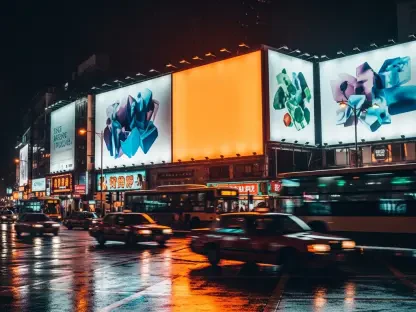Short introduction I’m thrilled to sit down with Anastasia Braitsik, a global leader in SEO, content marketing, and data analytics. With her finger on the pulse of digital marketing trends, Anastasia has been at the forefront of innovative strategies that transform how businesses approach local search optimization. Today, we’re diving into a groundbreaking approach called Social Media Map Stacking, a method that’s delivering rapid results for local SEO. We’ll explore how this strategy integrates Google Business Profile with social media, the impressive outcomes it’s achieving for businesses, and the specific tactics that make it a game-changer in dominating Google Maps rankings.
Can you start by explaining what Social Media Map Stacking is and why it’s seen as such a revolutionary approach for local SEO?
Thanks for having me, Sophia. Social Media Map Stacking is a cutting-edge strategy that blends Google Business Profile optimization with social media signals, targeted content, and advanced SEO techniques. It’s revolutionary because it accelerates how quickly businesses can dominate local search results, especially on Google Maps. Unlike traditional methods that rely heavily on slow citation-building or manual outreach, this approach creates a powerful, scalable system that integrates multiple platforms to amplify visibility. It’s about creating a cohesive digital footprint that pushes businesses into top spots like the Google 3-Pack in record time.
What sets this strategy apart from the more conventional local SEO tactics most businesses are familiar with?
Conventional local SEO often focuses on basic directory listings, getting reviews, and optimizing a Google Business Profile in isolation. While those are important, they can take months to show results. Social Media Map Stacking, on the other hand, layers in social media engagement, geo-targeted content, and structured authority-building to create a much stronger signal to search engines. It’s the synergy of these elements—connecting social posts, videos, and localized keywords with a business’s online presence—that makes it faster and more effective at driving rankings.
Can you share a real-world example of this strategy in action, like the success story with the sports massage business, and how their visibility increased by 33%?
Absolutely. We worked with a sports massage business that was struggling to stand out in a competitive local market. By implementing Social Media Map Stacking, we boosted their Search Organic Local Visibility—or SoLV—by 33% in just a few weeks. We started by optimizing their Google Business Profile with targeted, service-specific keywords, then layered in short-form video content across platforms like YouTube and Instagram to highlight their services. We also used geo-targeted posts to hit hyper-local search areas. The result was a massive jump in their Google Maps ranking, which directly translated to more calls and bookings.
Let’s break down some of the metrics you’ve mentioned, like Search Organic Local Visibility (SoLV) and Average Traffic Growth Rate (ATGR). What do these mean for someone who’s new to SEO?
Sure, I’m happy to simplify this. SoLV, or Search Organic Local Visibility, measures how often a business appears in local search results, especially on Google Maps. It’s a key indicator of how discoverable you are to nearby customers. ATGR, or Average Traffic Growth Rate, tracks the increase in website visits or profile interactions over time, showing how much more attention your business is getting. Together, these metrics give a clear picture of your local online presence and how it’s improving. For a small business, higher SoLV and ATGR often mean more foot traffic, phone calls, or online inquiries.
How does focusing on mid-tier, service-specific keywords play a role in this strategy, and why not just go after the most competitive terms?
Great question. Mid-tier keywords are terms that aren’t overly broad or hyper-competitive but still have decent search volume and relevance to a specific service. For example, instead of targeting something generic like “massage,” we might focus on “sports injury massage near me.” These keywords are easier to rank for and attract a more qualified audience—people who are ready to book. Going after the most competitive terms often means slower progress and higher costs, whereas mid-tier keywords allow us to build momentum quickly and expand visibility across a broader range of searches through variations.
Can you explain what Geo-Targeted Stacking is and how it helps businesses improve their local search rankings?
Geo-Targeted Stacking is a technique where we tailor content and social signals to very specific local areas, often down to neighborhoods or even street-level zones. We use real-time data from tools like GeoGrid rankings to see where a business is underperforming in local searches and then deploy targeted posts, videos, and updates that speak directly to those areas. For example, if a house cleaning service isn’t ranking well in a nearby suburb, we’ll create hyper-local content tied to that location. This builds relevance in Google’s eyes, boosting the business’s position in map results for people searching in those specific spots.
You’ve mentioned DA Stack Principles as part of this strategy. Can you unpack what that means in everyday language?
Of course. DA Stack, or Domain Authority Stacking, is about organizing your online content—whether it’s website pages, blog posts, or social media—in a way that builds and concentrates authority around your business. Think of it like creating a web of interconnected signals that all point to your expertise in a specific area or service. By structuring content into focused silos and linking them strategically, we make it clear to search engines what your business is about and why it should rank higher. This concentrated relevance is critical for local SEO because it helps Google trust your business as the go-to option in your area.
Video content seems to be a big piece of this puzzle. Why is short-form video so important in Social Media Map Stacking?
Video, especially short-form content like YouTube Shorts or Instagram Reels, is incredibly powerful for local SEO right now. It grabs attention quickly, engages users longer than text or images, and sends strong behavioral signals to search engines when people watch and interact with it. We syndicate these videos across multiple platforms to amplify their reach, often tying them to local keywords or geo-specific tags. For a local business, a quick video showcasing a service or customer testimonial can build trust and drive traffic back to their Google Business Profile, which in turn boosts their map rankings.
Looking ahead, what’s your forecast for the future of local SEO strategies like Social Media Map Stacking?
I believe local SEO will continue to evolve toward even more personalized and hyper-local approaches. Strategies like Social Media Map Stacking will become the norm as businesses realize the value of integrating social signals, video, and real-time data into their online presence. With Google placing more emphasis on user engagement and localized relevance, I expect we’ll see tighter integration between platforms and search results—think more seamless connections between social media activity and map rankings. Businesses that adapt early to these multi-layered strategies will have a huge advantage in staying visible and competitive in their local markets.









